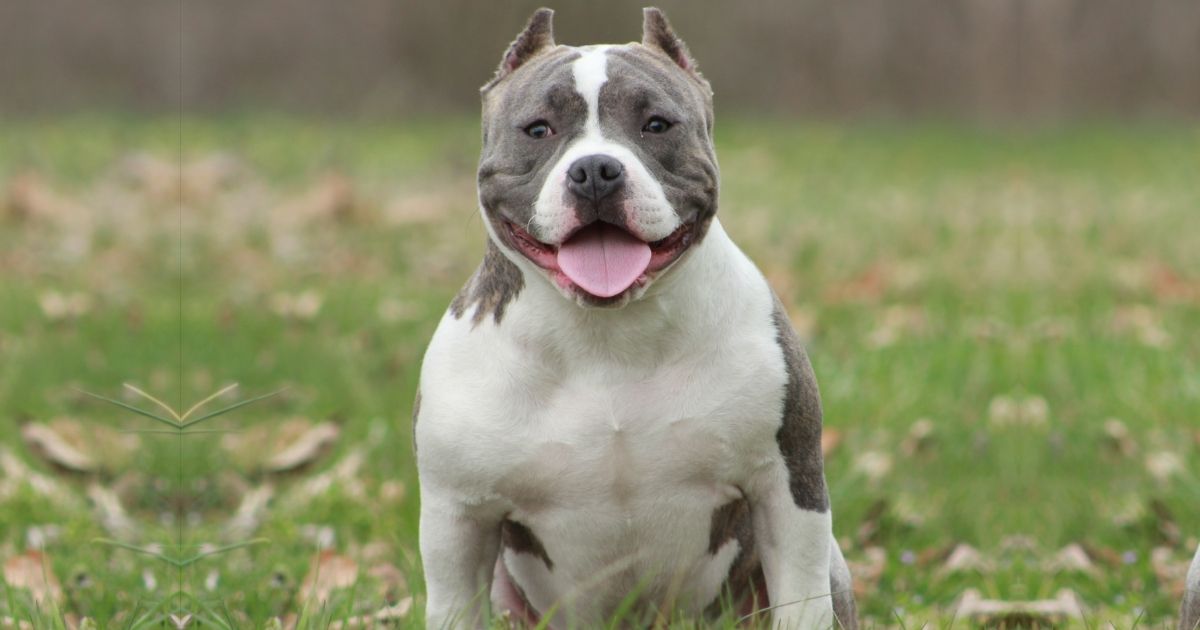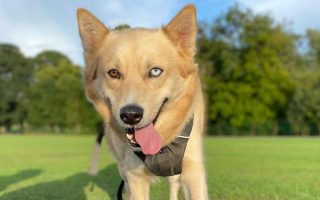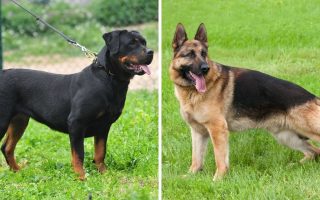One look at the physique and name of the American Bully dog breed is enough to make one reconsider interest in getting this canine.
What’s to expect from a breed called the American Bully? Aggressiveness? A bossy streak? Scaring off visitors?
Fortunately, the Bully is none of this. Far from being the mean kid, everyone runs away from, the Bully is that guy who walks up to a newbie and goes ‘hi, welcome to our school. Can I be your friend?’
Bred to be a part of people’s homes, the Bully is living his purpose in our modern times.
A breed with a heart for everyone, Bullies make sure those around them enjoy having them close by.
With more and more people opting for this Pit Bull lookalike, its popularity has increased in recent years.
This canine has health/care needs, some distinguishing features, personality, temperament, origin, characteristics, and other facets that we will cover in this American Bully facts and dog breed information.
Of course, like every other breed, they have some challenges. You shouldn’t consider owning one until you know the pros and cons and be sure you can handle the downsides.
If you are already a pet parent to an American Bully, chances are you know these things. However, a reminder and helpful tips wouldn’t hurt.
American Bully Facts and Information
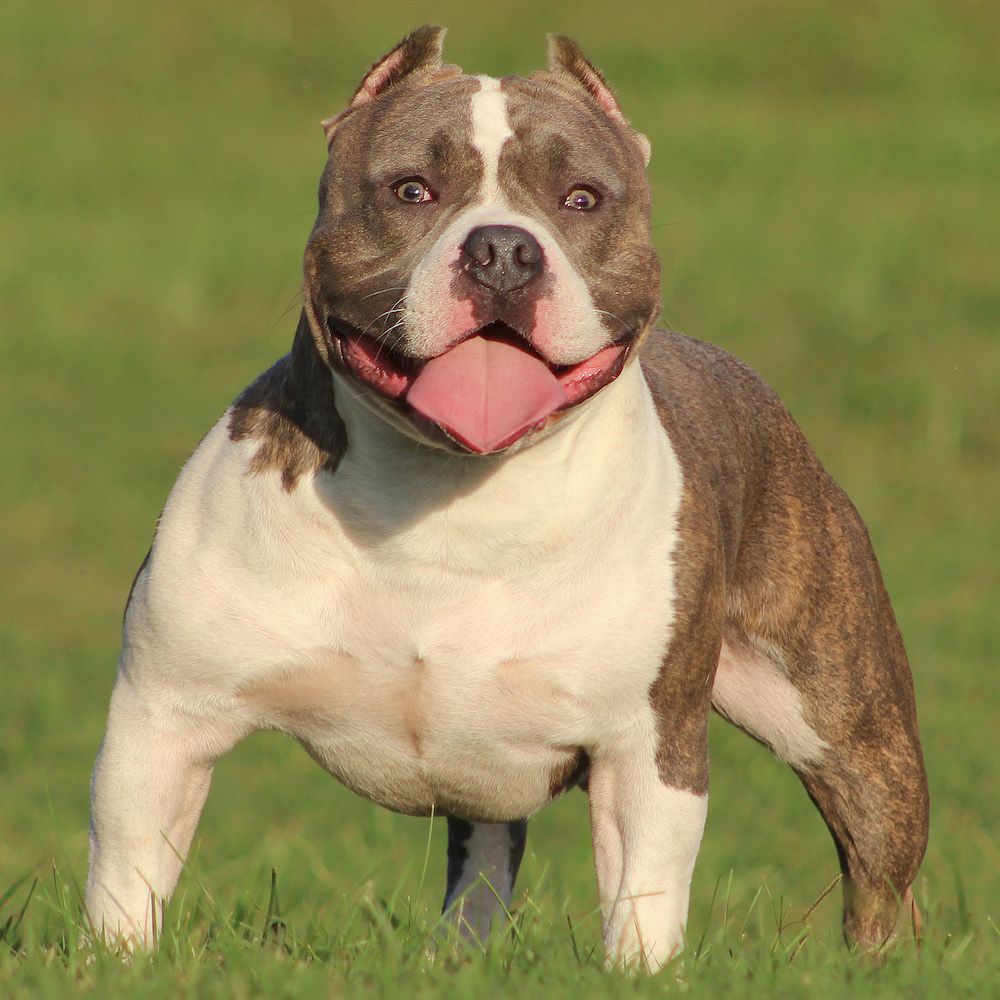
| Dog Breed Group | Companion |
| Height | 13 to 20 inches |
| Weight | 44 to 132 pounds |
| Coat | Short, smooth, glossy |
| Color(s) | All colors |
| Life Expectancy | 8 – 13 years |
| Temperament / Behavior | Outgoing, Friendly, Confident, Intelligent, Stubborn, Strong-willed, Loyal |
| Origin | United States |
| Bred For | Companionship |
| Nickname(s) / Other Name(s) | Am, Bully |
| Recognized by the AKC, ANKC, CKC, KC, FCI | No |
| Recognized by the UKC | Yes |
American Bully Characteristics
| Characteristics | Rating |
|---|---|
| Adaptability | 4/5 |
| Friendliness | 4/5 |
| Kid-Friendly | 4/5 |
| Pet-Friendly | 3/5 |
| General Health | 3/5 |
| Grooming Needs | 2/5 |
| Trainability | 4/5 |
| Intelligence | 4/5 |
| Playfulness | 4/5 |
| Exercise Needs | 4/5 |
| Energy Level | 4/5 |
| Tendency to Bark | 3/5 |
| Tendency to Drool | 4/5 |
| Tendency to Snore | 3/5 |
| Tendency to Dig | 3/5 |
Interesting facts about American Bully Dog Breed
Fact #1: The American Bully is not a Pit Bull Terrier
Due to their close resemblance, the American Bully is often thought to be a Pit Bull.
The fact that they share genes makes it even more confusing. Not to mention the controversies surrounding the term ‘Pit Bull’.
Does it designate a type or a dog breed?
The quick answer: Both. The Pit Bull type regroups some breeds, of which the American Bully is among.
However, there is a breed commonly referred to as the Pit Bull. That is the American Pit Bull Terrier.
The Bully is not a variant of the American Pit Bull Terrier.
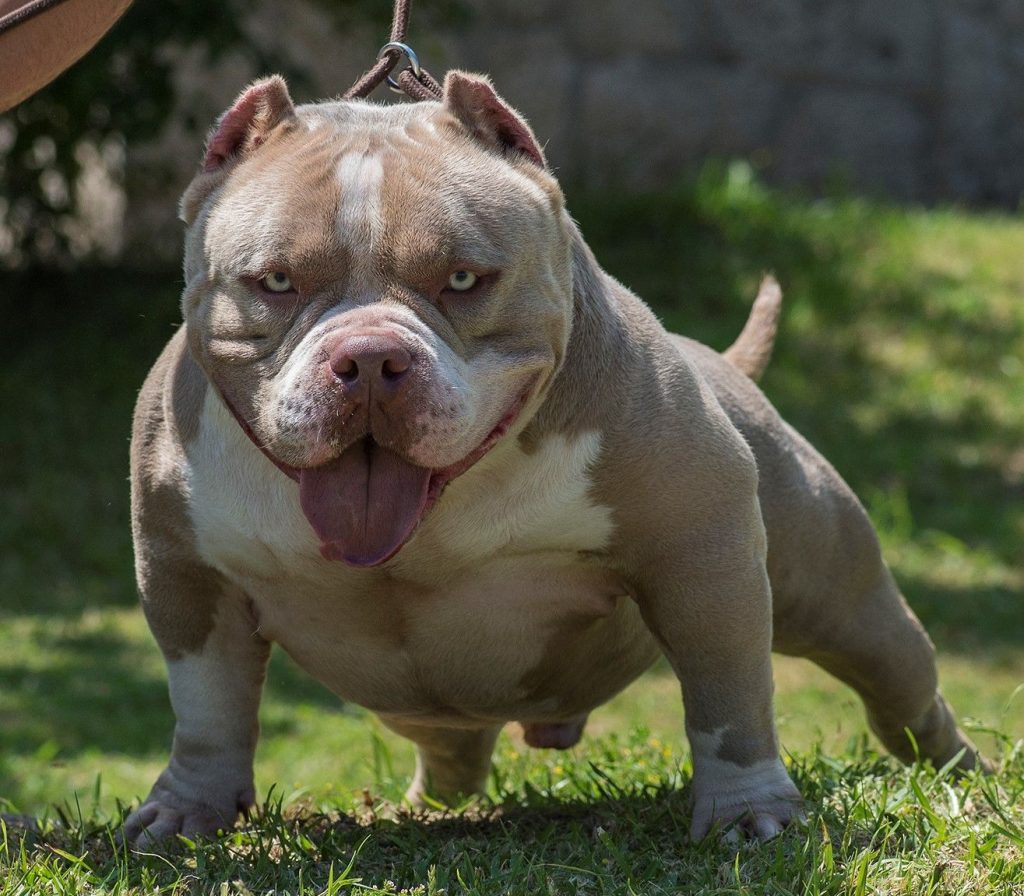
Fact #2: They have a bad reputation
This stems largely from the link between the Pit Bull Terrier and the American Bully.
Because both breeds have scary looks and muscular frames, people see them as aggressive. Sadly, the Pit Bull has been banned from some states in the US.
What’s more unfortunate about this stereotype is its untruthfulness. Pit Bulls may be wary of other dogs, but they are friendly towards people.
The American Bully is even less inclined to aggressiveness. In fact, both can’t make good guard dogs—though they get protective if they sense danger.
Fact #3: They were bred to be companions
The relatives of the American Bully were all bred to be workers. The American Pit Bull Terrier, for example, worked at a farm.
Another one, the Bull Terrier, was bred to be a fighter. Being a companion came as a secondary role.
In contrast, the American Bully was bred to be a companion, not a worker.
Breeders combined the best of the American Pit Bull Terrier and the Staffordshire Terrier to develop the American Bully.
Fact #4: They have a club named after them
The American Bully Kennel Club was created based on the Bully breed and was formed in 2004.
They were the first to recognize the American Bully and set a standard for the breed.
Other Kennel Clubs that have recognized the American Bully include the United Kennel Club and the European Bully Kennel Club.
Fact #5: The American Bully has four varieties
The Bully comes in many sizes that can be categorized into four: the Pocket, Standard, Classic, and XL varieties.
While some organizations recognize all four varieties, others recognize only the standard variety.
American Bully History and Origin
American Bullies originated from the United States in the late 20th century, making them an early breed.
The major reason for this breed was to develop a family companion with all the family-friendly traits of the Pit Bull Terrier and excluding the fighter qualities.
The dogs used to develop the American Bully were the American Staffordshire Terrier and the American Pit Bull Terrier.
One can say the breeders achieved their aim, as the American Bully has qualities that make him a good family pet.
Some other dog breeds that influenced the looks and temperament of the American Bully were the Olde English Bulldogge, Staffordshire Bull Terrier (different from the American Staffordshire Terrier), English Bulldog, American Bulldog, and French Bulldog.
The stocky ‘bully’ build of the American Bully came from the American Pit Bull Terrier, a factor that continues to bring confusion in the dog community today.
Their close resemblance can make the casual observer think they are of the same breed.
Their personality stemmed from the Staffordshire Terrier and some other aforementioned ones.
Though the breed was developed in the 1980s, it stayed unrecognized till 2004 when the American Bully Kennel Club was formed.
This club proceeded to recognize the American Bully and set a standard.
In 2013, the United Kennel Club recognized the breed. The American Kennel Club is yet to recognize the breed.
American Bully Temperament, Behavior & Intelligence
The American Bully is like that guy with imposing looks but the heart of a teddy bear.
With his outgoing nature, friendliness, and sense of humor, he makes you feel comfortable around him.
Far from the unfounded stereotype that he’s aggressive, the Bully will extend a hand of friendship to everyone, even strangers.
This breed isn’t the best choice of watchdogs and guard dogs, but he’s getting fame as a companion.
Their tolerance towards children is another laudable trait. They are eager to please, as well, and willing to obey their master.
Though they are confident dogs, their aggressive tendencies are low, especially if you train them well.
However, do not think the Bully is a pushover because he’s friendly and accommodating.
When faced with danger, the courage he inherited from his ancestors comes out in full force.
He’s ready to fight to the death in defense of those he loves. This only happens when he’s provoked, though.
They are energetic and playful too, so you have to get outside and moving to satisfy that urge for activity.
However, they adapt well to the indoors and can remain inactive when they’ve exercised.
First-time dog owners can attempt training this breed as they are easy to please.
There are some other things to consider, of course, like their energy and drooling tendencies, but overall they flow with every sort of pet parent.
Are American Bullies good house dogs?
American Bullies are playful, friendly, and loving with both family members and strangers. Their courage makes them protective, but they don’t get aggressive unless provoked. When that happens, they defend their families with all they’ve got.
Bullies are not picky with their environment too. As companions, they can lounge in the living room and watch television with you. They will also go jogging or play outside. This adaptability makes owning one easier.
Overall, the American Bully was bred to be a family companion. He does that well.
Are American Bullies good first-time dogs?
The American Bullies score high as a good dog for first-time dog parents. These muscular dogs are among the most affectionate, friendly loyal, and fun dogs.
They are also easy to train and eager to please, so much that a novice parent can find them suitable as a first-time dog. They are less likely to disobey, though you still need to put in the effort to shape them up.
Are American Bullies good with kids?
Another trait that makes the American Bully a successful family companion is his love for kids and tolerance of their excesses.
American Bullies are kid-friendly dogs who won’t pose any significant harm to your child. They are affectionate with children just as much as they are with adults, perhaps even more.
As extroverts, they don’t reject any opportunity to play and have fun. They would also defend your child when they sense danger.
Do well to supervise playtime with the American Bully and your kids, as a precautionary measure.
While they won’t harm your kid on purpose, accidents happen. There may be times for you to intervene.
Your kids should not take the tolerance and gentleness of the Bully as an excuse to mistreat him. Teach them to show your dog some courtesy.
Remember, how a person treats an animal and a child says a lot about him/her.
Are American Bullies good with other dogs and pets?
With outside dogs, the American Bully doesn’t always get along. He may not be so willing to show his extroverted side to other canines at the dog park.
However, if the dog is your pet and you have socialized the Bully well, he’ll see the other dog as a member of the pack and get along.
Proper socialization helps them get along with cats and other pets as well. They are gentle dogs who may not be willing to go on a chase.
Male vs Female American Bully
Choice of gender is a dilemma for many. Should you get a male or female American Bully?
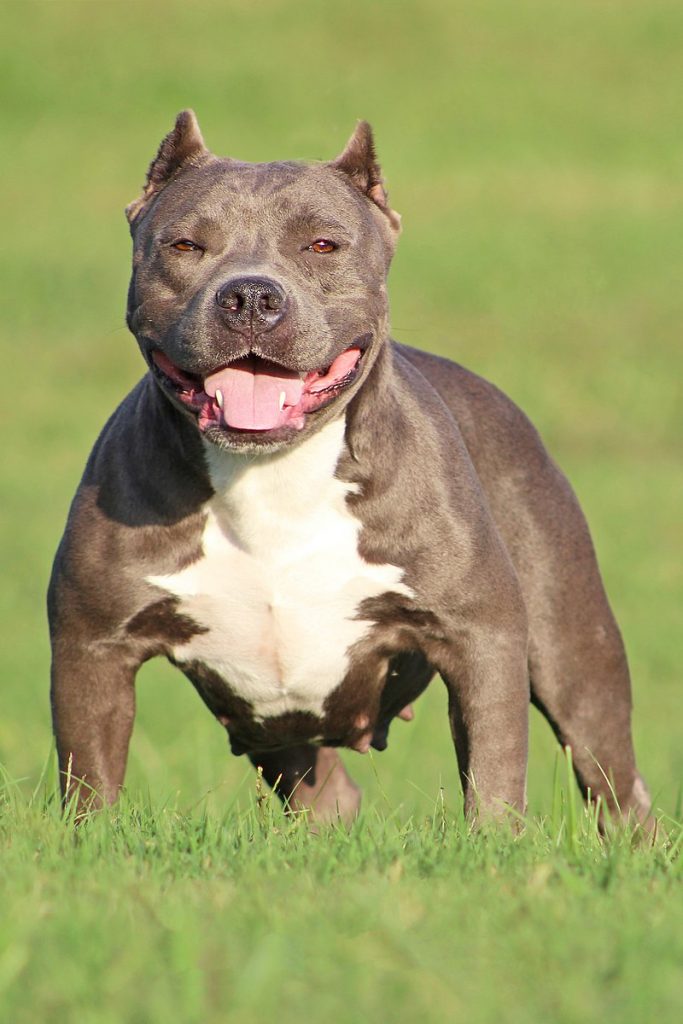
While we know it’s a thing of preference, there are a lot of factors at play. You should get a gender you’re sure would fit.
With every dog breed, there are gender differences. When it comes to the distinctions, dog breeds—and many other living beings—can be placed in two categories:
- The sexually dimorphic, where the genders are widely different from each other. One can notice the differences with ease, whether physical or in personality.
- The sexually monorphic, where the differences are either non-existent or so subtle, they change nothing.
You will decide which category the American Bully falls into.
Both male and female Bullies share the same weight of 44 to 132 pounds. The male is taller, however, by an inch thereabouts.
They also have different genitals, with the females being capable of reproducing.
The male Bully is often more dominant and more likely to get aggressive towards other dogs. The females tend to be more protective, homely, and more affectionate.
Caring for an American Bully
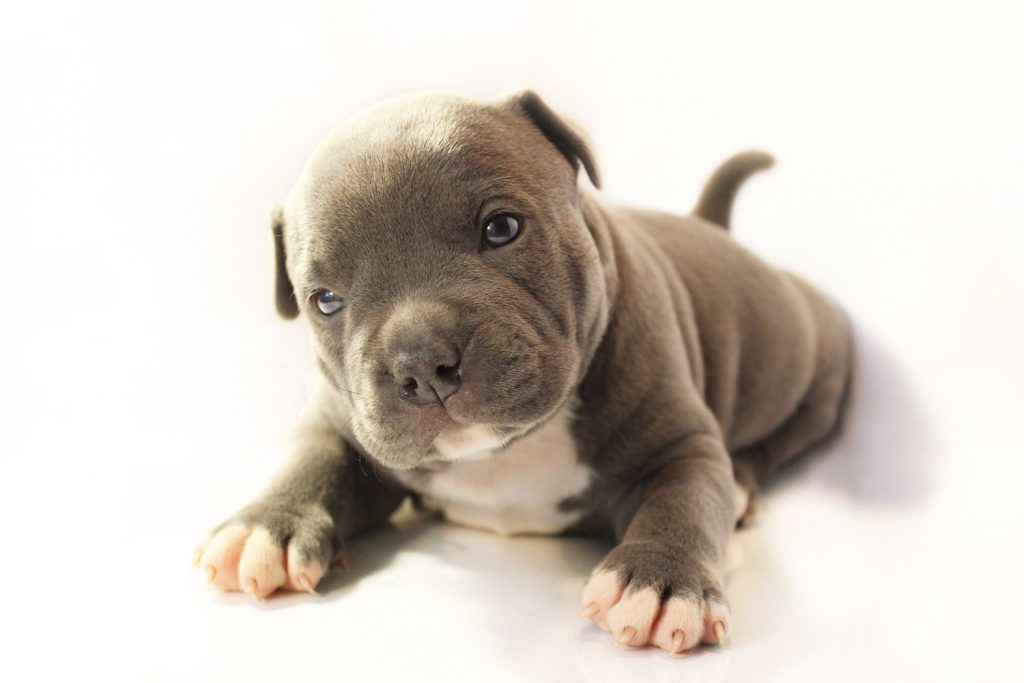
American Bully Food and Diet
You can’t go wrong with your pets when you feed them. Bullies, in particular, like food and are always in for a treat.
They require a meal with high nutrients, enough to keep their muscular frame moving. With the Bully, consider the age, size, individuality, and energy.
Remember, there are different varieties of this breed. While we would focus on the standard, be sure you know exactly what your American Bully needs.
The American Bully needs a rich meal to stay strong and fit. Some dog breeds with stronger genes can manage a poor meal. The Bully, however, shouldn’t be put to that test.
You need to know the nutrients your Bully needs before you even set out to acquire one.
Feeding the Bully Puppy
The Bully pup is growing and delicate. He should be fed with that in mind. Bully puppies need nutrients like protein, calcium, and a healthy amount of fat.
Calcium strengthens the bones, protein works on those muscles and fat helps maintain the energy level. Avoid feeding your puppy human food and adult dog meals.
Have a feeding schedule for your puppy and stick to it. This would serve as routine, a form of training.
From 8 weeks to 12 weeks, feed your pup 4 times a day. Let it reduce to 3 from 12 weeks to 6 months of age. After 6 months, 2 meals is appropriate.
Feeding the Bully Adult
When the Bully becomes a full adult, 1.5 to 2.5 cups a day is enough to satisfy them.
Check your Bully’s weight and individual habits before feeding. If he’s putting on a lot of pounds, for example, tweak the schedule.
Feeding the Senior Bully
Senior Bullies tend to be inactive. They can do without some nutrients like carbohydrates. Protein and calcium are good for them.
Also, because they are less active, they are prone to obesity. You need to manage their meals.
American Bully Exercise
Exercise to a Bully is a need he doesn’t want to do without. You’d only end up with a destructive pet if you neglect this need.
Though American Bullies were bred to be companions, they have the genes and energy of working dogs.
Because of their size and muscular build, they require a good amount of exercise.
Lack of exercise will leave your Bully bored and idle, a situation you don’t need.
Plus, exercise helps in weight control, builds confidence, and gives an outlet for your Bully to release pent-up energy.
For Bullies to be satisfied, they need at least an hour of exercise. A walk or jogging of like 16 miles will keep their hearts pumping and muscles toned.
Be sure not to overexert your Bully, though. Gauge how far he can go and work his exercise needs around that.
A free play in a yard will do your Bully a lot of good too. That’s why it’s ideal for you to have a house with a yard before getting an American Bully.
If you don’t have a yard, you can always get another alternative. The good thing about Bullies is that they can remain indoors once they’ve exercised enough.
If you need a space for them to play, a park is a good option.
For Bully puppies, do not engage them in intense exercise to avoid injuring them.
They shouldn’t be allowed to run as they are delicate and growing. Start your puppy off with a short walk then increase the distance as he grows.
Seniors don’t need as much exercise as younger adults too. For senior Bullies, exercise is meant to maintain their weight during the later years of their lives. Treat them as puppies.
The American Bully is easy to train. Unlike many other Bulldogs who give their owners a hard time, the American Bully loves to please his master and generally won’t be rebellious. More perks you get from a natural companion.
New owners can successfully train an American Bully. However, as a novice, note that they are energetic and extroverted.
If you can’t match their energy level, you may wound up frustrated.
Also, that they are trainable doesn’t mean you should develop a laissez-faire attitude, or they’d portray habits unusual to them.
Even a low aggressive breed like the Bully can become wild if you don’t enforce positive habits.
They are pack animals, which means they need a leader. The way a pack is arranged, if they sense that you’re not strong enough, they’d want to take over.
You need to be firm and confident while training them. If you have a phobia for dogs, overcome that before getting an American Bully.
Training should begin immediately you step into the house with your puppy. At that point, start setting boundaries.
While puppies certainly score high on the cuteness rating, don’t be tempted to spoil them.
Positive reinforcements work wonders with the American Bully. They love treats, praises, and encouragements.
Avoid harsh treatments and punishments, even when they do something wrong. It’ll be counterproductive.
Take them on different pieces of training like obedience training, socialization, and house training.
American Bully Grooming Needs
American Bullies are low-maintenance dogs. They don’t require much effort to keep them clean. Their short, smooth coat only needs a little touch to be okay.
They don’t shed much, so you don’t have to worry about hair getting all over the place. Even during warmer seasons when they shed more, it is not on a high level.
Don’t bathe your American Bully frequently to prevent removing the oil that covers their skin.
Without that oil, their skin gets dry. Giving them a bath like once in eight weeks, usually when they get dirty, grimy, or smelly is fine.
Go further by ensuring their dental care is on point. Give them regular teeth brushing to remove dirt and keep those teeth strong.
Make sure the toothbrush and paste you use are approved by your veterinarian.
Their ears too need cleaning. The best tool to use is an ear cleaner with cotton balls.
Wear plastic gloves and take it easy while cleaning. It isn’t easy for a dog to stay still and get its ears clean.
Trim their nails for them not to get long and cause discomfort to your Bully. You also need to take it easy while doing this, lest you injure your dog and scare him away. If you have no experience, you can hire a groomer.
American Bully Health Conditions
American Bullies are considered healthy breeds when compared to similar breeds. While their life span isn’t so long, they have the potential to stay healthy during that period.
However, they are vulnerable to certain illnesses. While it isn’t a guarantee that every Bully suffers from these complications, it is important you take note of them.
Below are some health conditions that may affect the American Bully.
Hip dysplasia
Hip dysplasia is an inherited condition that happens when the joint gets loose.
Symptoms include abnormal movement, reluctance to move, and signs of pain.
Even an energetic dog like the American Bully would rather lie around all day to avoid the pain. Left unchecked, it causes lameness.
You can prevent hip dysplasia by getting a puppy with a hip dysplasia-free record. Feeding a puppy with calcium nutrients helps too.
Treatments for this condition include physical therapy and weight control.
Cherry Eye
Cherry eye occurs when the tear gland of a dog gets swollen and becomes itchy. Symptoms include dry eyes, pain, a bulge of the tear glands.
Surgery is the best treatment for this malady.
Elbow dysplasia
Elbow dysplasia is one of the biggest causes of lameness in dogs. It occurs when there’s an abnormality in the bones that form the elbow joint.
Symptoms include limping, stiffness of the joints, reluctance to move, and swelling of the elbow. Surgery is often the best solution.
Frequently Asked Questions
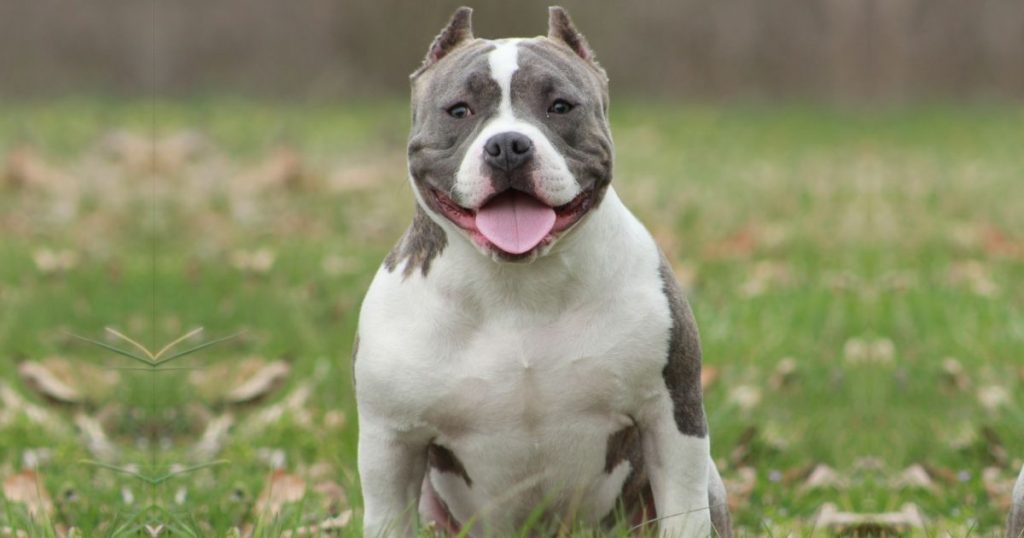
What are American Bullies known for?
American Bullies were bred to be companions. In spite of their looks and imposing physique, they are known for being sweet, affectionate, and friendly family companions.
How big is a standard American Bully?
The American Bully comes in different varieties, each with their sizes. The standard American Bully weighs 44 to 132 pounds and grows as tall as 20 inches.
Are American Bullies lap dogs?
Though Bullies are companions, they have the energy to spare. They make good lapdogs, but they also want to hit the ground moving every now and then.
Do American Bullies like to cuddle?
American Bullies are sweet household companions. When their exercise needs are met, they can cope indoors and would definitely be up for a cuddle.
Is it hard to take care of an American Bully?
American Bullies are low-maintenance dogs who don’t require much effort to groom. They are also easy to train and feed. While their exercise need is a bit high, they are not hard to take care of.
Is it hard to train an American Bully?
The eager-to-please and friendly nature of the American Bullies make it easy to train them. Unlike their close relative the American Pit Bull Terrier, the American Bully is suitable for first-time owners. You need to put in the effort, though, and establish the fact that you are in charge.
How Long do American Bullies live?
American Bullies, sadly, don’t have a very long life span. They can live up to 13 years.
How much do American bullies cost?
Because they are popular and good companions, American Bullies don’t come cheap. A Bully pup costs between $2,000 and $5,000. Puppies of unknown bloodline costs around $800.
Do American Bullies shed a lot?
American Bullies are low shedders, even during seasons they shed more hair. They don’t shed massively and you don’t have to bother about hair being all over the place.
Is an American Bully right for me?
A loving, playful, and friendly dog breed, the American Bully lives up to his companion history. He plays with kids, loves to please adults, and can adapt to many environments.
He’s also easy to train and maintain. While the American Bully has challenges, they are few and far between.
If you can handle the size, energy, and some drool, the Bully is right for you.
Wrap Up
Training and handling an American Bully does have its hurdles. However, far from being a hard breed to care for and train, the American Bully is an ideal companion for many people.
Owners can attest to the loving, sweet gentle dog underneath the rugged and muscular exterior.
We can say with confidence that the myths and stereotypes surrounding the American Bully are baseless.
We hope this article on American Bully facts and dog breed information has helped achieve your aim and answered your questions.
If you’re looking to get a Bully, you can also consider adopting your Bully puppy from an adoption shelter.
Related: Complete Alphabetical List of Dog Breeds
Useful Resource:
- Official Breed Club: American Bully Kennel Club
- Breed Standards: American Bully Breed Standards

